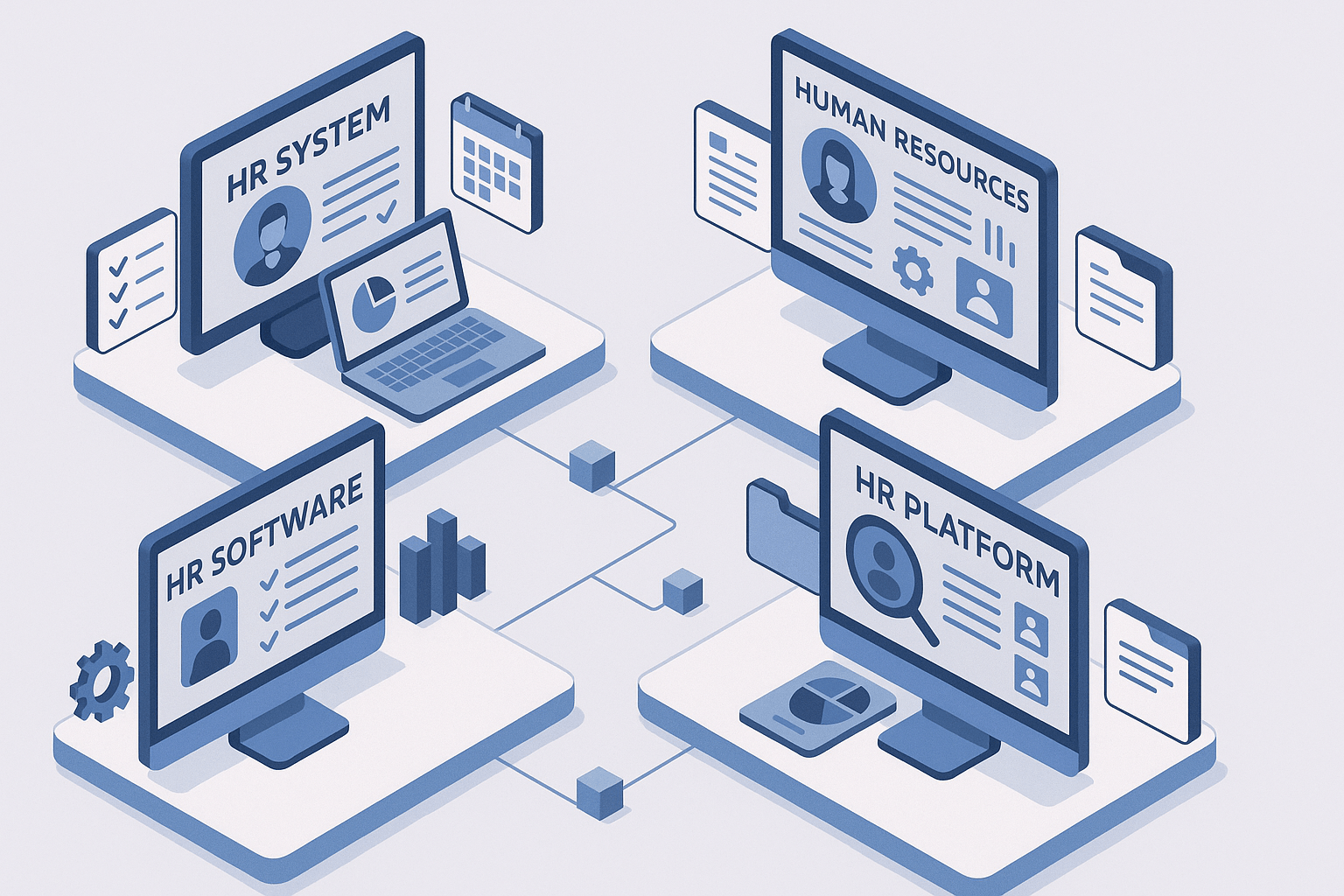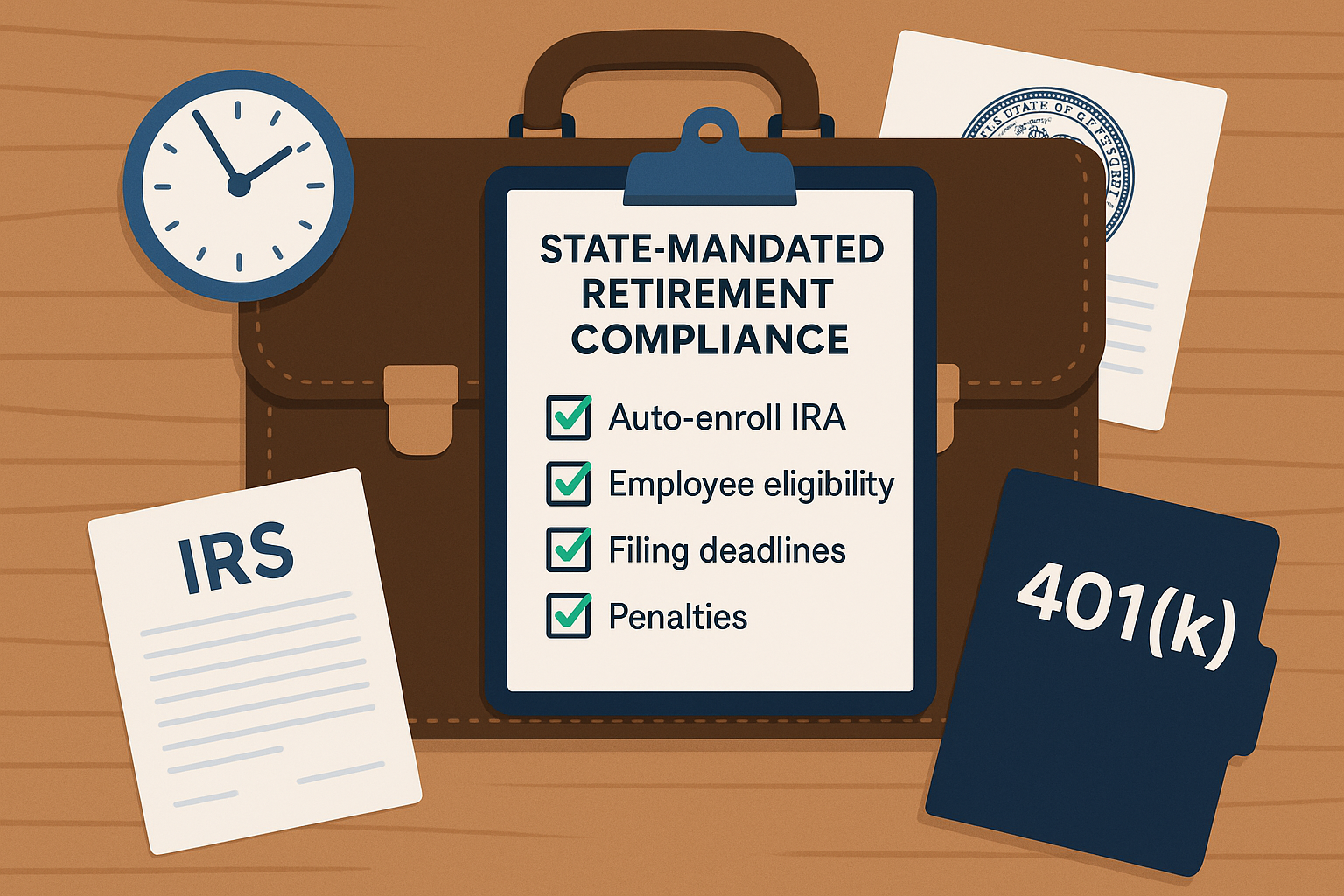Return-to-Office Mandates: Why They Fail & What HR Leaders Should Do
August 12th, 2025
8 min read

Are your return-to-office mandates sparking resistance instead of collaboration? Are you grappling with unexpected employee turnover or declining engagement as you attempt to bring your teams back together? You're not alone, and you're witnessing what we call "The Great Office Rebellion" – a fundamental challenge to outdated workplace models that demands strategic leadership, not administrative mandates.
The shift to remote work wasn't just temporary; it fundamentally reshaped what employees expect from their jobs. Now, this friction has created a direct pushback against unnecessary disruption to proven, effective ways of working. This isn't about avoiding work; it's a clear statement that modern productivity isn't tied to physical presence.
At Lift HCM, we've guided organizations through human capital challenges for decades. We understand that truly productive, engaged workforces aren't built on mandates, but on clarity, connection, and consistency, regardless of location. Productivity thrives when trust is earned, not demanded, and when policies align with the proven capabilities of your people.
📊 The Current Landscape: 90% of large employers now have some form of RTO policy, creating the largest workplace expectation gap in modern business history.
In this article, you'll gain practical insights into why current RTO mandates fall short, understand the tangible costs of misaligned policies, and discover actionable strategies that build sustainable, trust-based cultures attracting top talent.
Table of Contents
- What's Driving the Push for Return-to-Office Mandates?
- Why Are Employees Resisting RTO Mandates?
- What Does Employee Data Reveal About Return-to-Office?
- What Are the Real Reasons Executives Are Pushing RTO?
- What Is the True Cost of RTO Mandates?
- What Are Smart Alternatives to Rigid RTO Policies?
- How Are Companies Successfully Implementing Hybrid Work?
- HR & Business Leaders: Navigating Return-to-Office Challenges
- Q&A: Answering Your Top Questions About RTO
- Navigating Forward with Trust, Flexibility, and Strategic HCM
What's Driving the Push for Return-to-Office Mandates?
For many organizations, fully remote or hybrid work began as a pandemic necessity. Companies quickly adapted, maintaining operations and productivity from afar. This emergency measure, however, quickly became a preferred way of working for millions. Employees discovered newfound flexibility, reduced commute times, and a better work-life balance, proving that practical work wasn't necessarily tied to a physical office.
Yet, as the immediate crisis subsided, a noticeable shift began to emerge. Since mid-2022, many major employers have pushed to recall their workforces. Companies like Amazon, Meta, Disney, and Goldman Sachs started implementing aggressive return-to-office mandates, often requiring employees to be present for multiple days per week.
Executives often justify RTO mandates with collaboration, culture, and accountability, but these overlook remote work successes and can prompt employee pushback. Industry responses differ: tech sees strong resistance, finance stresses in-person needs, and manufacturing must balance on-site production with flexible administration. Effective policies address these unique dynamics; ignoring them leads to ongoing challenges.
Why Are Employees Resisting Return-to-Office Mandates?
Employees aren't resisting work; they're resisting an often arbitrary and unnecessary disruption to a system that, for many, was working well. The pandemic proved that "butts in seats" doesn't inherently equate to superior performance. Forcing a one-size-fits-all office policy can inadvertently signal a lack of trust and an outdated understanding of modern productivity. This perception often leads employees to question RTO motivations and, in many cases, to seek opportunities elsewhere.
A recent 2024 Pew Research study illuminated the top reasons employees push back against RTO mandates:
-
Longer Commutes and Drained Work-Life Balance: Daily commutes eat into personal time, family commitments, and overall well-being. Employees who reclaimed time during remote work are loath to give it back.
-
Perceived Lack of Flexibility: The ability to manage personal appointments, school pickups, or structure one's day around individual productivity peaks was a massive benefit of remote work. RTO mandates often remove this autonomy.
-
Higher Costs for Childcare and Transportation: Returning to the office means significant out-of-pocket expenses for childcare, fuel, public transport, and meals, rapidly eroding disposable income.
-
Belief That Productivity Isn't the Problem: Employees often feel that if they were productive remotely, the push to return isn't genuinely about performance, but rather about control or other less transparent reasons. This breeds resentment.
Forcing a return without clearly articulating a compelling "why" can shatter the "psychological contract" between employer and employee. When employees feel that their autonomy is arbitrarily revoked or their proven capabilities are doubted, many choose to walk away, seeking organizations that align with their evolved expectations.
What Does Employee Data Reveal About Return-to-Office?
The resistance to RTO mandates isn't anecdotal; compelling data strongly support it. These numbers paint a clear picture of employee preferences and the potential impact on organizations that fail to acknowledge them. Ignoring this data comes at a significant cost, impacting retention, talent acquisition, and the overall health of the business.
Consider these powerful statistics:
-
73% of Amazon employees indicated they would consider leaving if forced into the office full-time (Fortune.com).
-
Recent government data shows that 22.9% of workers teleworked in Q1 2024, indicating a continued preference for remote work arrangements even as companies push return-to-office policies.
-
Despite this evidence, a concerning disconnect persists at the leadership level. The KPMG 2024 CEO Outlook revealed that 83% of CEOs expect employees to be back in the office full-time within the next three years. This stark contrast between leadership expectations and employee realities is precisely what we at Lift HCM refer to as The Great Office Rebellion.

What Are the Real Reasons Executives Are Pushing RTO?
While executives often publicly cite collaboration, innovation, and culture for RTO, their motivations can be more complex, rooted in traditional management paradigms. It's not always about objective performance data, but deeply held beliefs, historical practices, and tangible investments. Understanding these underlying drivers is essential for HR and business leaders to facilitate more productive conversations.
Some significant, often unspoken, drivers of executive RTO bias include:
-
Justifying Real Estate Investments: Many companies hold substantial long-term leases on expensive office spaces. A vacant or underutilized office represents a significant financial drain, compelling leaders to justify these investments.
-
Concerns About Culture Erosion: There's a genuine fear among some leaders that remote models will dilute company culture and diminish a sense of belonging, particularly if culture is traditionally tied to physical presence.
-
Old-School Leadership Styles: Equating Presence with Performance. For many leaders, visible presence in the office has long been synonymous with hard work and productivity. This ingrained belief can make it difficult for them to trust that employees are equally productive remotely.
It's crucial to acknowledge that many of these concerns often stem from outdated management paradigms rather than being fully supported by contemporary performance data. A modern approach requires challenging these assumptions and focusing on outcomes and measurable results, rather than simply on physical presence.
What Is the True Cost of RTO Mandates?
When there's a significant disconnect between what leaders demand and what employees need, the consequences ripple throughout the organization, resulting in substantial costs. These costs aren't always immediately visible but manifest in decreased productivity, talent drain, and a damaged employer brand.
The impact is multifaceted:
- Decreased Employee Engagement: Research consistently shows that employee engagement declines when workers feel their preferences are ignored or their proven work arrangements are arbitrarily changed.
- Higher Turnover (Attrition): The most tangible cost of misaligned RTO policies is increased employee turnover. Replacing an employee is incredibly expensive, often costing six to nine months of that employee's salary. When employees feel unheard or prefer flexibility, they will vote with their feet.
-
Damaged Employer Branding: News of employee dissatisfaction travels fast. Organizations known for rigid or tone-deaf RTO policies will find it increasingly difficult to attract top talent.
-
Erosion of Psychological Contract: The implicit agreement between employer and employee is fundamentally broken when mandates are perceived as arbitrary. This leads to a decline in trust, loyalty, and discretionary effort.
The cumulative effect of these factors creates a toxic environment that hinders growth and innovation. For HR and business leaders, understanding these profound costs is paramount to making informed decisions that prioritize long-term organizational health.
What Are Smart Alternatives to Rigid RTO Policies?
Rather than resorting to rigid ultimatums, progressive organizations adopt flexible work structures that successfully balance operational needs with employee preferences. These models recognize that the future of work isn't about where work happens, but how it's managed, measured, and supported.
Here are some effective models that leading organizations implement:
-
Core Collaboration Days: Teams agree to come into the office 2–3 specific days per month, or a few days per week, specifically for high-value collaborative activities or critical meetings.
-
Flexible Hybrid Policies: This model offers employees more autonomy. Guidelines are set (e.g., "be in the office X days a week/month"), but employees have flexibility to choose which days, coordinating with their teams.
-
Performance-Based Evaluations: The focus shifts entirely from "hours in the office" to measurable outcomes and results. Managers are trained to assess performance based on completed projects and achieved goals, rather than observed presence.
Implementing these flexible models requires the right technological infrastructure and a shift in management mindset. This is where Lift HCM's workforce scheduling and time & labor tools become invaluable. Our solutions support fluid work arrangements by offering clear attendance tracking, seamless scheduling, and manager visibility without micromanagement.
How Are Companies Successfully Implementing Hybrid Work?
Examining organizations that have successfully navigated hybrid and flexible work models provides valuable insights. These companies prove that with the right strategy, technology, and trust-based leadership, it's possible to enhance both employee satisfaction and business outcomes. Their success stories highlight the powerful advantages of embracing adaptability.
- HubSpot: A pioneer in "office optional" roles, HubSpot empowers employees to choose their work model through their @home/@flex/@office approach, with 72% of employees choosing fully remote work.
- Airbnb: In 2022, Airbnb introduced a "Live and Work Anywhere" policy, enabling employees to choose their preferred location for both living and working. This bold move immediately resonated with talent and career page engagement.
These case studies underscore a critical point: flexibility isn't just a perk; it's a strategic imperative. Companies that embrace it thoughtfully are seeing tangible benefits in their talent acquisition, retention, and overall organizational health.
HR & Business Leaders: Navigating Return-to-Office Challenges
As RTO mandates continue to meet employee resistance, HR teams are uniquely positioned to serve as catalysts for positive change. Here are key action steps:
-
Prioritize Workforce Surveys Before Any Policy Changes: Actively solicit feedback from employees to understand their preferences and concerns.
-
Benchmark Engagement and Turnover (Pre- and Post-Policy): Establish clear metrics for employee engagement, satisfaction, and turnover before RTO changes, and continuously monitor them afterward.
-
Align leadership on the "Why" Behind Any Policy Shift: Ensure executive leadership is fully aligned not just on what the policy is, but on the compelling, data-backed why.
-
Invest in Tools That Truly Support Hybrid and Remote Work: This means robust Human Capital Management (HCM) systems with integrated solutions for time tracking, communication platforms, and workforce scheduling.
-
Focus on Outcomes, Not Just Presence: Shift management training and performance evaluation frameworks to prioritize deliverables and results over physical presence.
-
Foster a Culture of Trust and Empathy: Build policies rooted in trust, flexibility, and a genuine understanding of employees' lives.
The ultimate goal isn't to "win" a control battle over office space; it's to strategically build a resilient, adaptable, and trust-based culture that truly attracts, engages, and retains the right people for your organization's long-term success. HR leaders are the strategic partners who can guide their organizations through this critical transition.
Q&A: Answering Your Top Questions About RTO
Q: How do we determine which roles can be remote vs. office-based? A: Conduct role-by-role analysis focusing on:
- Client interaction requirements
- Collaboration intensity needs
- Equipment and resource dependencies
- Compliance and security considerations
- Team coordination necessities
Q: What metrics should we use to measure flexible work success? A: Track both quantitative and qualitative indicators:
- Productivity metrics (output, quality, timeliness)
- Employee satisfaction and engagement scores
- Turnover rates and retention analytics
- Client satisfaction measurements
- Cost per employee calculations
Q: How do we handle managers who resist flexible work policies? A: Address resistance through:
- Comprehensive manager training programs
- Performance management system updates
- Success story sharing and peer learning
- Gradual implementation with support systems
- Clear expectations and accountability measures
Q: What technology investments are essential for hybrid work success? A: Priority technology investments include:
- Integrated workforce management systems
- Secure remote access infrastructure
- Collaboration and communication platforms
- Performance tracking and analytics tools
- Compliance and security monitoring systems
Q: How do we calculate the ROI of flexible work policies? A: Measure returns through:
- Reduced turnover and recruitment costs
- Increased productivity and output quality
- Decreased absenteeism and sick leave usage
- Lower office space and operational expenses
- Improved employee satisfaction and engagement
Q: What are the hidden costs of implementing flexible work? A: Consider these factors:
- Technology infrastructure investments
- Manager training and development costs
- Policy development and communication expenses
- Potential short-term productivity adjustment periods
- Enhanced cybersecurity and compliance requirements
Q: How do we maintain company culture in a distributed workforce? A: Build culture through:
- Intentional virtual and in-person connection events
- Clear communication of values and expectations
- Regular feedback and recognition programs
- Collaborative projects and cross-functional initiatives
- Leadership modeling of desired behaviors
Q: What's the best approach for handling employee requests for full remote work? A: Evaluate requests based on:
- Role requirements and collaboration needs
- Individual performance history and capabilities
- Team dynamics and project requirements
- Client service implications
- Business operational necessities
Navigating Forward with Trust, Flexibility, and Strategic HCM
The ongoing debate over office space isn't truly about desks or cubicles. It's about trust, flexibility, and an organization's readiness for the future of work. Past mandates, often driven by outdated assumptions, have frequently led to resistance and talent loss. Employees have clearly proven their ability to thrive remotely. The future belongs to organizations that adapt, not dictate. By listening to your workforce, leveraging data, and investing in the right infrastructure, you'll secure both performance and talent retention.
If your organization is wrestling with RTO policies, struggling with employee engagement, or needs robust tools to support a distributed workforce, your Human Capital Management (HCM) systems must evolve. At Lift HCM, we partner with businesses like yours to align workforce expectations with operational realities. Our smart, intuitive time tracking, seamless scheduling, comprehensive compliance, and impactful employee engagement solutions empower you to manage your people strategically, regardless of their location. Build a workplace where trust thrives and productivity soars.
Ready to optimize your workforce strategy? Explore Lift HCM's solutions today.
Caitlin Kapolas is a results-driven professional with a strong background in account management and retail. She is dedicated to improving client experiences and building lasting relationships. Caitlin excels in identifying client needs, resolving issues, and implementing customized solutions that drive value. Her effective communication skills ensure high client satisfaction and loyalty, making her a trusted advisor and partner in meeting client needs with precision and professionalism.




.png?width=473&height=315&name=Digital%20Employee%20Experience%20DEX%20in%20HCM-21%20(1).png)





















